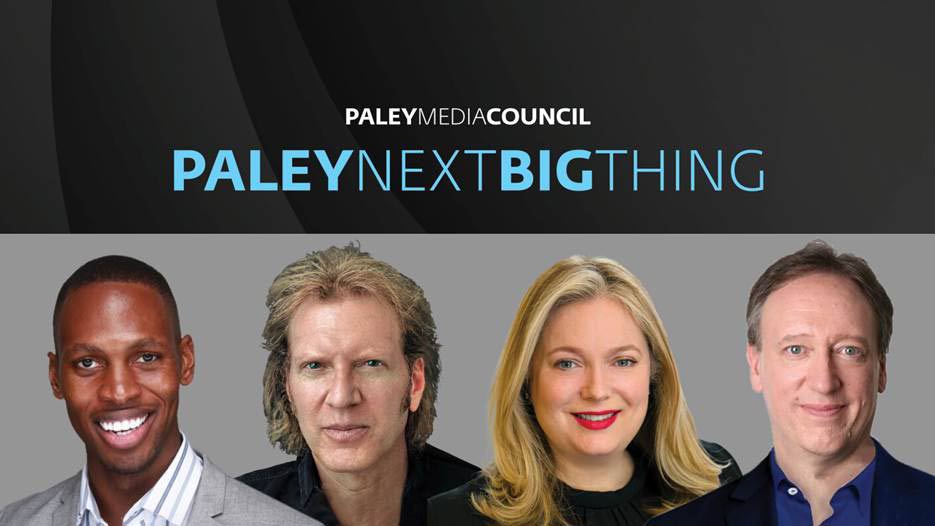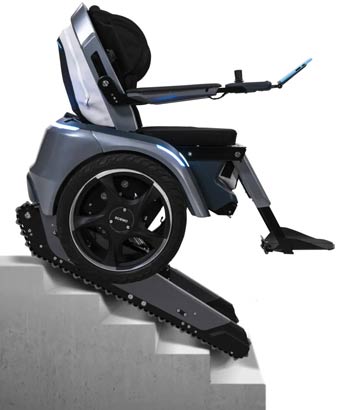Tech News
The “Next Big Thing” in Tech is Here
with More to Come

Thought Leaders Survey Latest in Consumer Electronic Products
at The Paley Center — Part I of II
by Bernice Elizabeth Green
Whatever can be imagined can be realized.
That’s a big thought that only big thinkers like Dalvin Brown, Mike Pell, Lena Petersen, and Jonathan Miller can tackle.
And Our Time Press will share their thoughts on this and other questions in Part II of this week’s “The Next Big,” a brief survey of the latest in Consumer Electronic products, here or on the horizon as presented at Consumer Electronic Shows all over the nation recently.
On Wednesday, January 11, 2023, at the height of the fall-winter coast-to-coast rollouts of the latest in electronics, The Paley Center for Media, here in New York City, hosted its annual CES event as The Next Big Thing. A significant event feature was a showcase of the “big things” to expect, but The Center also featured an in-person panel of these five globally recognized game-changing thought leaders in the tech field.
Dalvin Brown is the Personal Tech reporter for the Wall Street Journal; Pell, author of “The Age of Smart Information” and “Envisioning Holograms,” is Envisioneer/Director at the Microsoft Garage in New York City; Petersen is Chief Brand Officer and Managing Director at Media Link, and Miller helms the Integrated Media Company.
So why should you want to pay attention to CES? For one – and it’s the big one if you’re dependent on any electronic gadget to get through the day: for your entertainment, personal communication, information access, or, most importantly, mobile assistance for health and wellness needs. So, it may be a good thing to get ahead of these times and learn what’s coming next.
Then, there’s another side: if you’re instinctively and intellectually concerned about ethics in technology – with such controversial inventions as A.I. looming, you may want to learn just how big the “monster” could grow, or what industry leaders think about it, one way or another.

Did you hear about the car that changes colors to match any outfit in your wardrobe for a potential total of 80 ensembles? BMW’s getting ready to save you a trip to the auto body paint shop. Without speed painting. Without paint, period. Just a touch of your finger.
Ever wanted to know what’s inside food or any product? The Mantiscope chip detects what’s in just about everything, including what’s in you, through advanced infrared technology.
How about taking one short step instead of several virtual — or actual — trips to the lab for tests and sitting through mounds of diagnoses by several specialists? Withings’ U-Scan product provides a holistic view of a person’s health — based on urine testing.
At the Paley Center, the guest tech experts discussed the exciting products they saw, the different themes, and the ethical challenges that might arise as tech continues to advance, without skipping a beat or avoiding speaking on contradictions, and the seismic shifts that have occurred since the very first CES event.
It must be acknowledged here that the panel moderated by Miller, a former CEO of AOL, shared their observations in the spiritual midst of the late CBS “master builder” and “powerful visionary” William Paley. Nearly a century ago, in 1928, Paley imagined the potential in a grouping of radio stations and, from there, built his Tiffany Network, the most powerful communications empire of the time. Forty years hence, engineers, inventors, scientists, and other tech media visionaries converged in New York City at the first Consumer Electronics Show at the Hilton and Americana Hotels– to show off their quantum-leap “way out” inventions. Of interest, the audience was primarily attended by white males.
It was historic. Organizers hosted 200 exhibitors and 17,500 attendee over four days. So, what were the Next Big Things, then? Pocket radios and televisions with integrated circuits. Most NBT products debuted over CES’ following two decades since 1967 are now considered outdated. They included yesteryear’s VCR (1970), laserdisc players (1974), Atari Pong home consoles (1975), VHS VCR (1977), early home computers (1978), the camcorder (1981), Compact Disc player (1981), the Commodore 64 computer (1982), the Amia computer (1984).
In his WSJ column, a week before the Paley Center CES, Dalvin Brown’s description of the Las Vegas big-meet aptly captures what CES has become, and the Paley Center reflected:
CES is now “a global technology bazaar where companies offer clues about what’s coming in the year ahead and beyond.”
The importance of the January 11 experience is the accessibility it permitted. Our Time Press, compliments of the Paley Center, is hotwired for a journey through the minds of the tech industry’s top movers, creators, and imaginers. While Brown describes his work as “writing about gadgets, apps, and stuff,” the former CUNY Ida B. Wells Scholar and Master’s degree recipient from the Craig Newmark Graduate School of Journalism in economics reporting, is the recognized interpreter of the nationwide new-tech-scope scene. Pell, called “the unapologetic disruptor,” is responsible for those breakthroughs you may love or be concerned about; as a pioneer of Smartphones, the web-based Metaverse, and AI. Peterson is the marketing genius behind her company’s new visibility platforms branding for all programs and franchises.
Jonathan F. Miller, the panel moderator, was the Chair of Digital News Media at News Corp. and Chair & CEO of America Online, 2002-2006.
While various products were discussed at the event, Brown, in his WSJ article, noted that the assistive products were impressive. eSight Go glasses allow low-vision users to “fine tune” objects and faces they see in real life. XanderGlasses provide captions for conversations occurring in real-time.
Wheel-chair-bound seniors need not worry about the challenge of negotiating steep stairs, anymore. Scewo BRO has developed a stair-climbing, curb-capable wheelchair that ascends and descends staircases.
Some “Big Thing” inventions are small; people with limited hand and arm movement can apply lipstick through L’Oreal’s handheld motorized smart-makeup applicator called Hapta, the world’s first. Another L’Oreal product, Brow Magic, is an electronic eyebrow applicator that gives a customized look in a matter of seconds.
The wheelchairs and cosmetic tools are just two of the many beautiful innovation stories coming out of CES recently.
The high-powered panel, however, did not avoid discussing ethical and legal challenges with some controversial tech advancements. They answered questions like who controls the algorithm of technology like ChatGPT, especially with the rise of fake news stories. How can consumers know whether a product is recommended through Virtual Assistants and AI ad spots purchased from brands?
At the conclusion of the event, Maureen J. Reidy, President & CEO of The Paley Center for Media, said that the Center would “continue driving the conversation around the guiding influence of technology and media on the world and learning about the key insights, takeaways, and groundbreaking technology and products that will innovate the way we live.”
Next month, industry and technology experts answer Our Time Press questions on the latest trends, compelling products, innovations, and future products. (To be continued)

